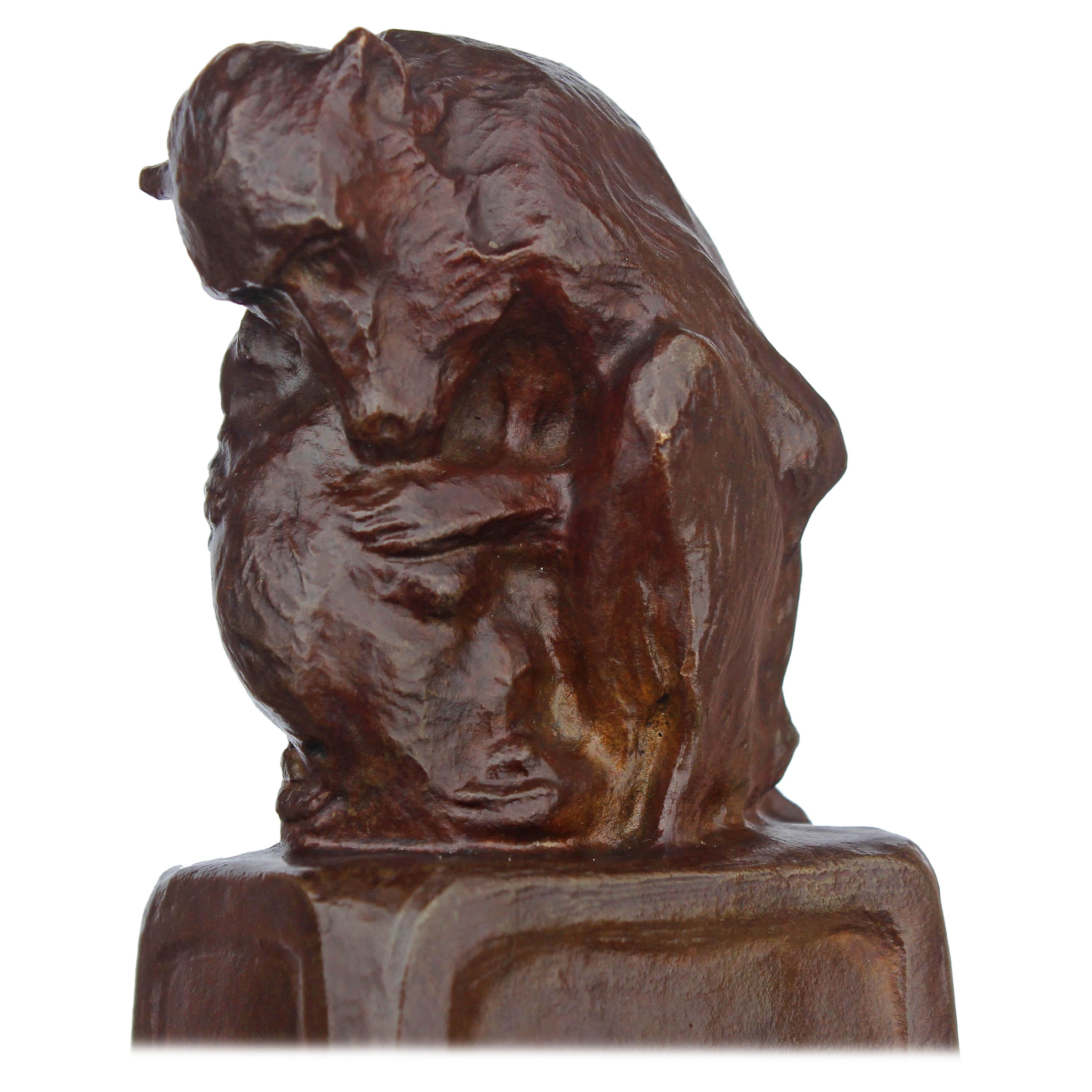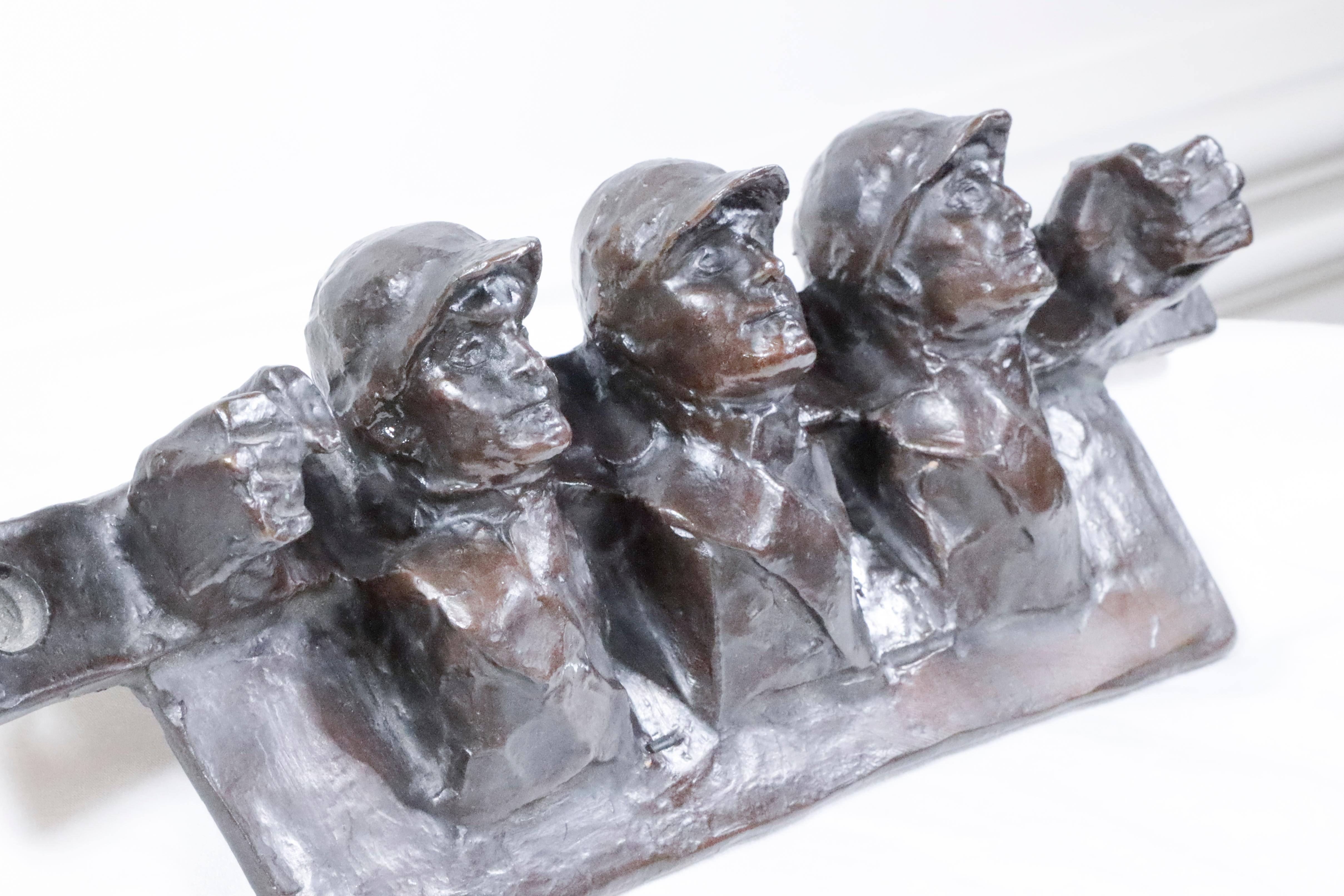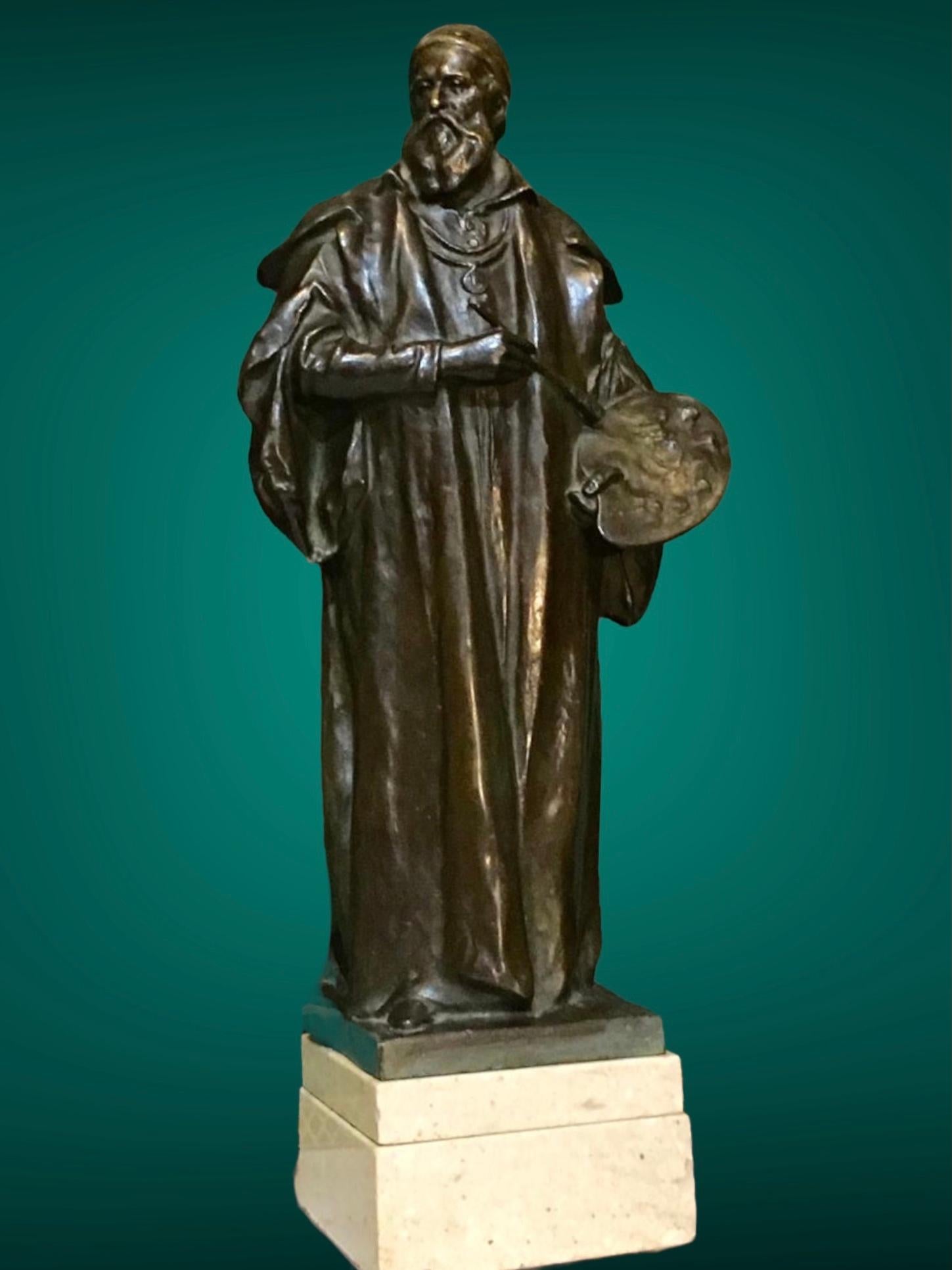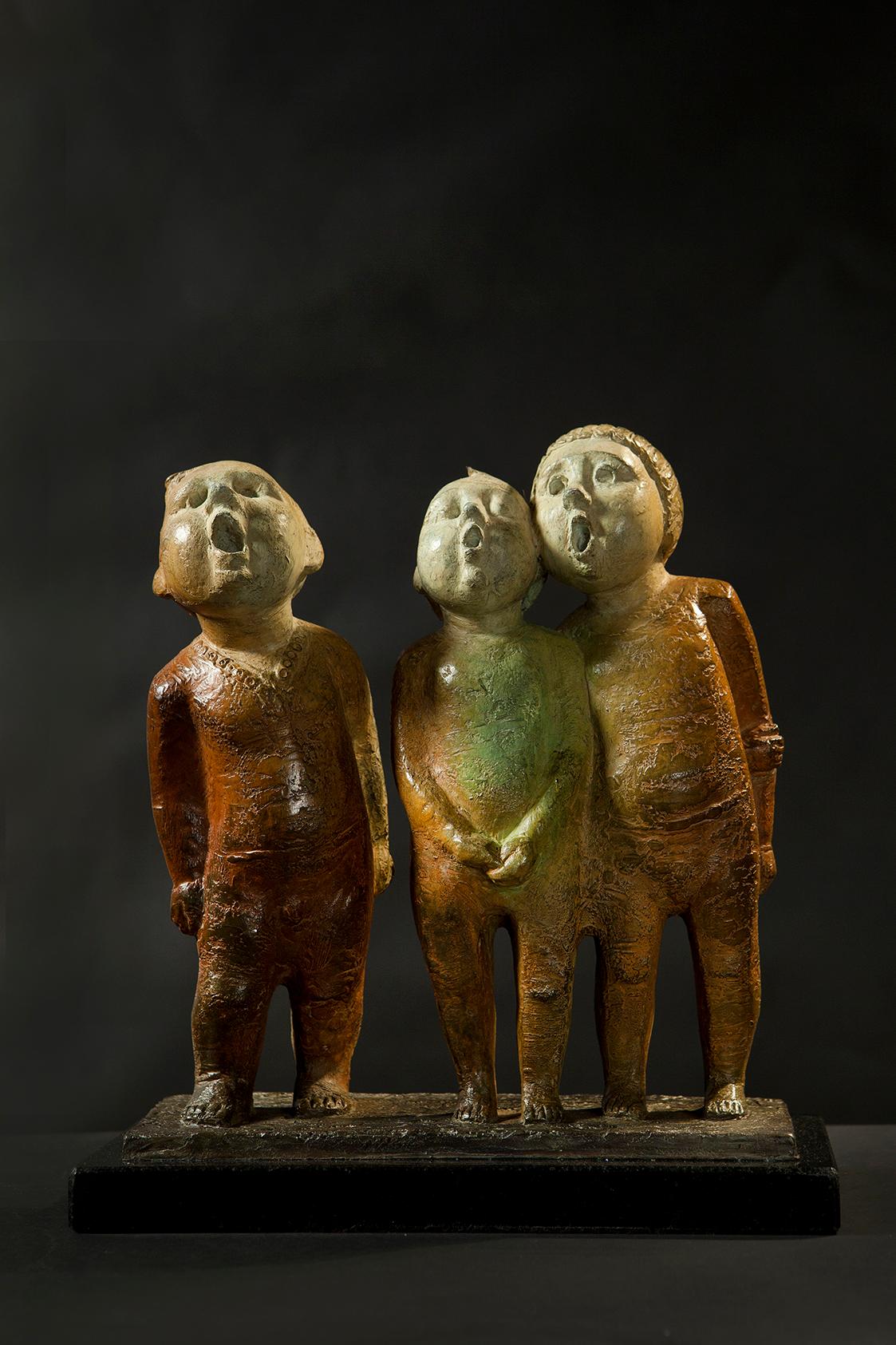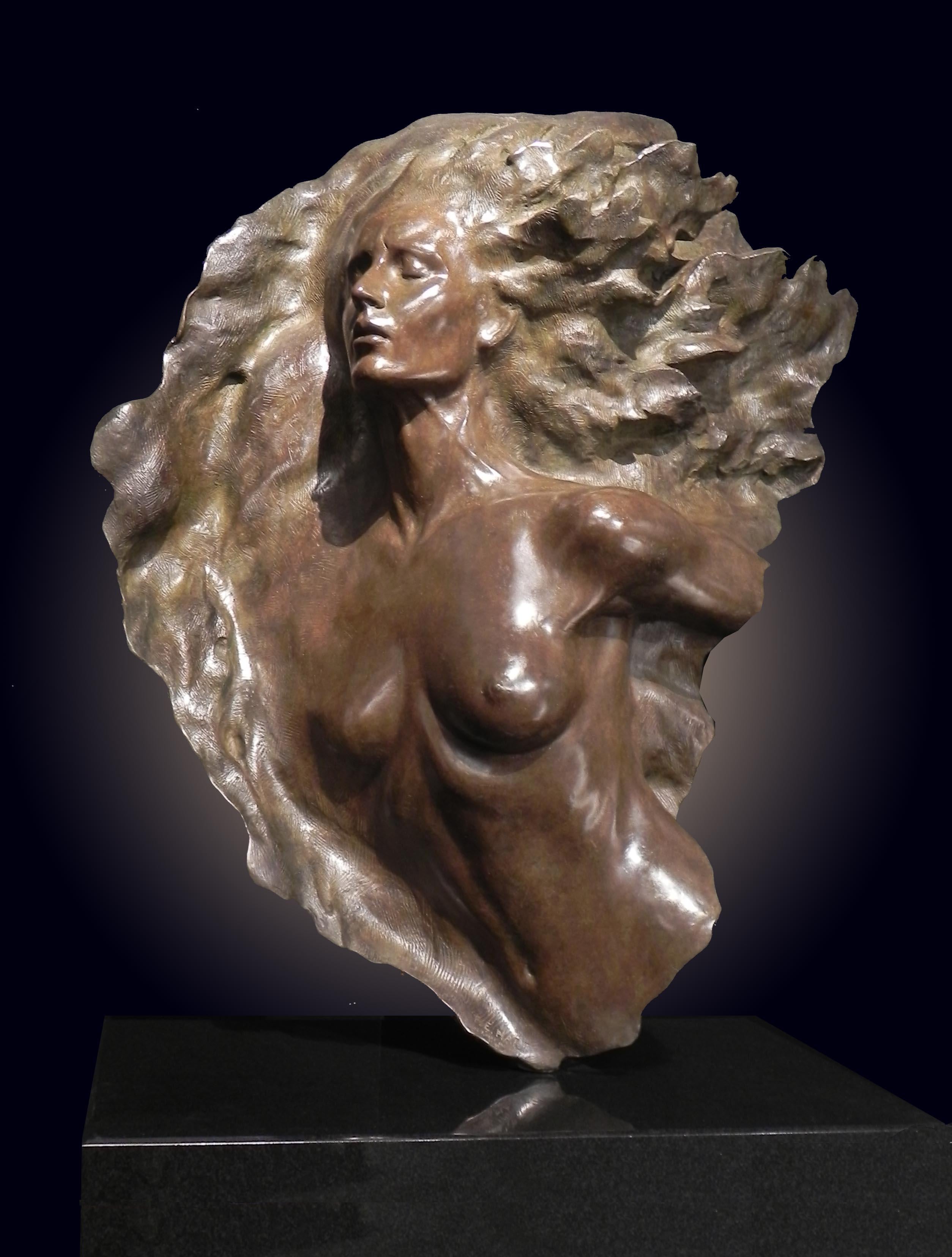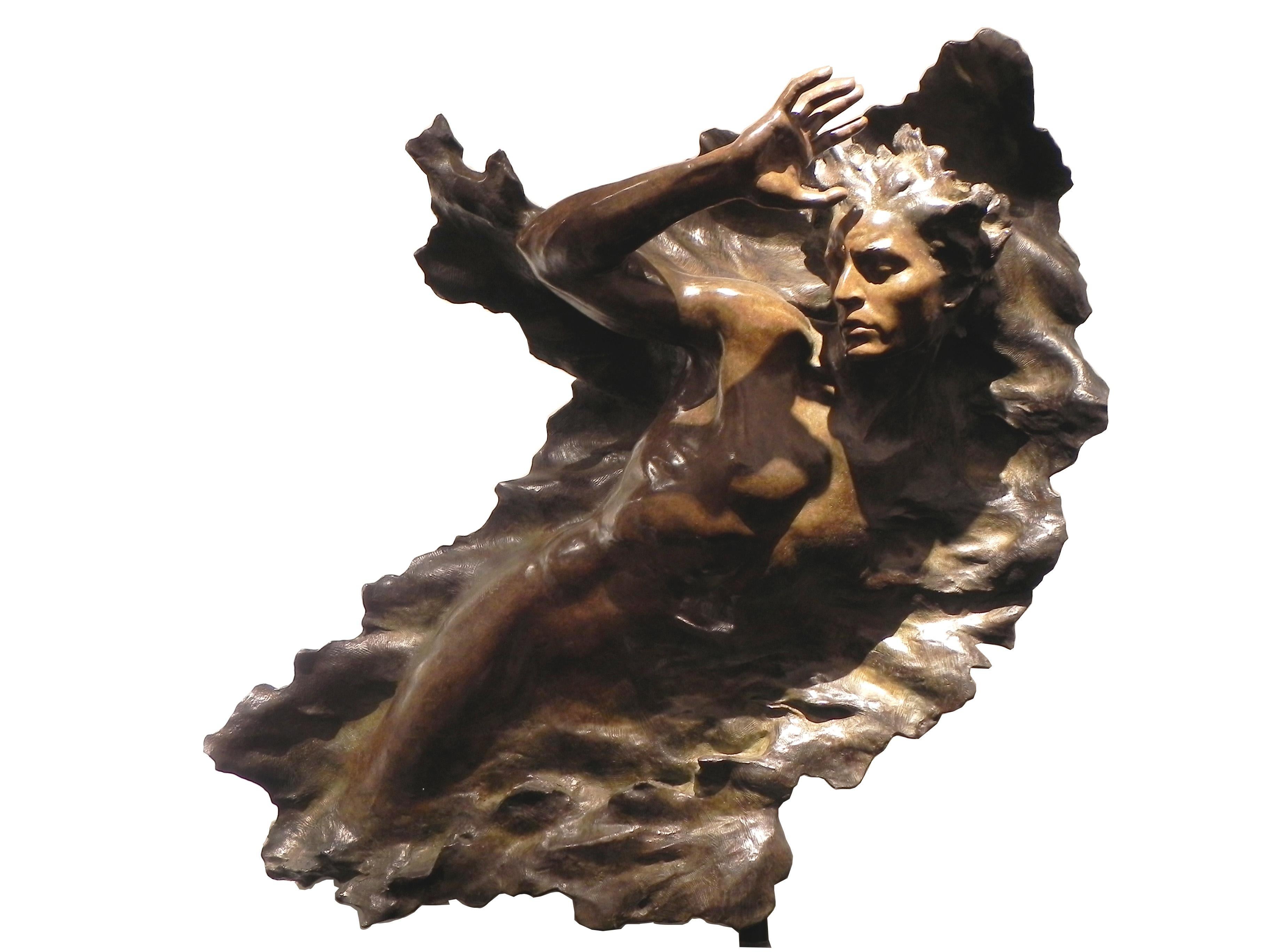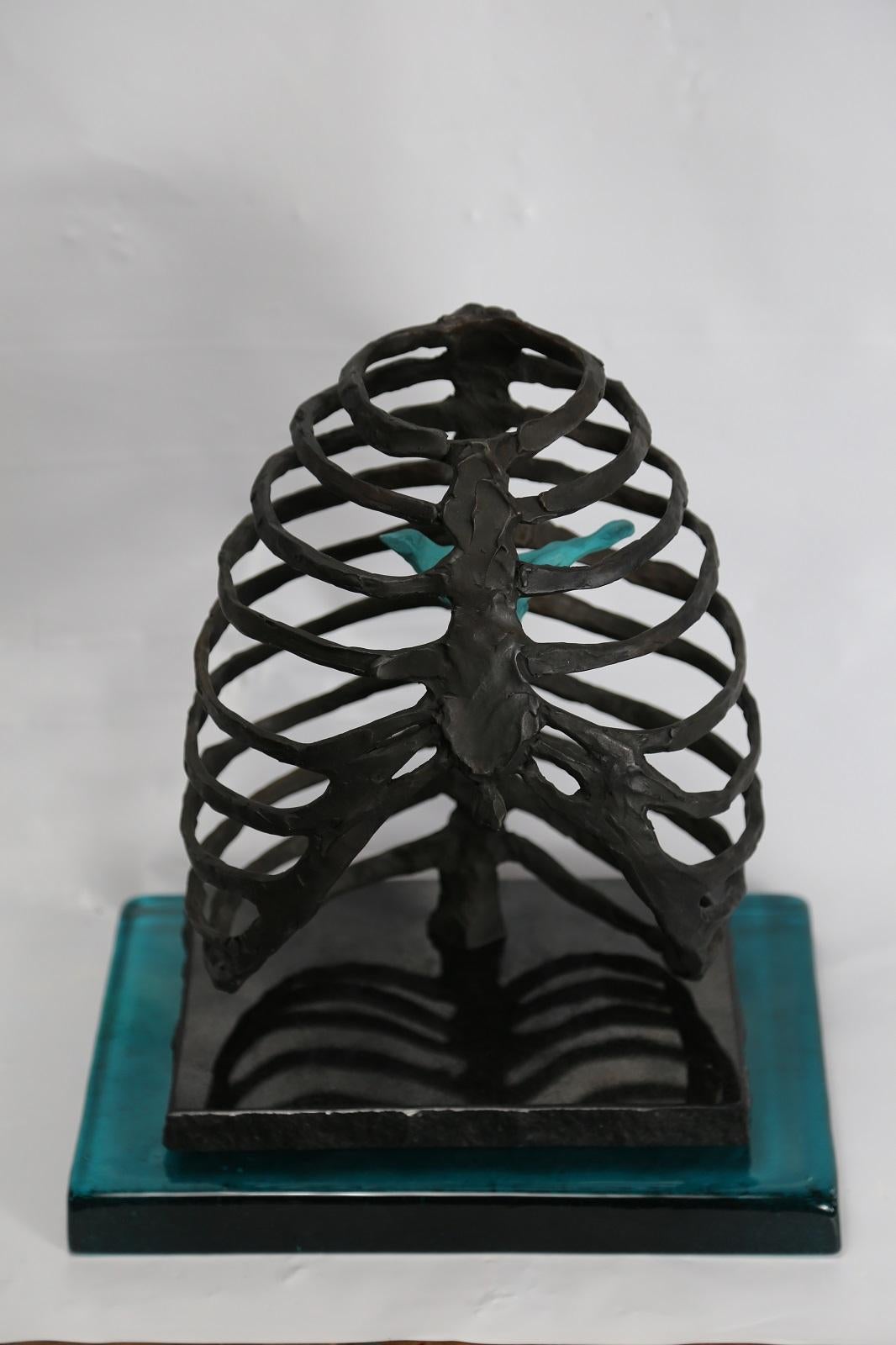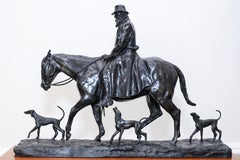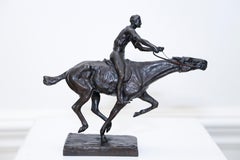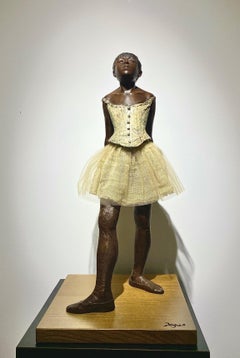
Edgar Degas "La Petite Danseuse de 14 ans" (The Little Fourteen-Year-Old Dancer)
View Similar Items
Want more images or videos?
Request additional images or videos from the seller
1 of 7
Edgar Degas "La Petite Danseuse de 14 ans" (The Little Fourteen-Year-Old Dancer)1998
1998
About the Item
- Creation Year:1998
- Dimensions:Height: 27.36 in (69.5 cm)Width: 10 in (25.4 cm)Depth: 10 in (25.4 cm)
- Medium:
- Movement & Style:
- After:Edgar Degas (1834-1917, French)
- Period:
- Condition:
- Gallery Location:Los Angeles, CA
- Reference Number:1stDibs: LU143627857682
About the Seller
5.0
Vetted Seller
These experienced sellers undergo a comprehensive evaluation by our team of in-house experts.
Established in 1988
1stDibs seller since 2020
10 sales on 1stDibs
Typical response time: 5 hours
More From This SellerView All
- Ting Shao Kuang " Huntress"Located in Los Angeles, CATing Shao Kuang (1939, Chengdu, China) "Huntress" Limited Edition Bronze Sculpture, 1990. Edition NUMBER 99/250. Signed on base. 19.5" H x 12"W 49.53 x 30.48 cm Ting Shao Kuang was born in 1939, in Chenggu, a small village located in the Northern province of Shanxi, China. His earliest childhood was marked by the horrors of the Sino-Japanese war that destroyed his land and left him abandoned after the evacuation of his parents to Taiwan. He found his consolation and escape in painting and by the age of 11, he painted on a daily basis, using the cooking oil as a medium for the pigment. Even besides his limited supplies, Ting Shao Kuang managed to use his extraordinary talent and got the opportunity to attend a prestigious high school which was connected with the Beijing’s Central Academy of Arts and Crafts where he later gained his further education. His painting lessons were based on rules of Social Realism without freedom of expression and with the strict prohibition of any foreign influences. After graduation in 1962, Kuang obtained a position to teach at the Yunnan Art Institute in Kunming. Painting the unacceptable abstract paintings during the night, he would destroy every piece of them in the morning, fearing of the arrestment of the authorities of the country. Still, Ting Shao Kuang’s progressive and modern vision did not fail to attract the attention and he was suspended from his work and escaped to northern China, finding the refuge in Buddhist monasteries in Gansu where he studied ancient sculpture and cave paintings on the old Silk Route which had been preserved for centuries. Using the distinctive technique, Ting Shao Kuang’s work combines traditional Chinese influences with the Western art forms. Always turning to the female characters as his favorite subjects, their sophisticated shapes have been created from the artist’s deepest feelings and literature that inspired him. After the death of Mao, Kuang and his colleagues founded the famous Yunnan Shen She Art...Category
1990s Figurative Sculptures
MaterialsBronze
- Ting Shao Kuang "Pensive Seated Woman"Located in Los Angeles, CATing Shao Kuang (B. 1939) "Pensive Seated Woman" 1989 Cold painted bronze sculpture; signed in casting, stamped "15/250 [copyright symbol] Segal Fine Art 1989" Dimensions: 16 1/2 x 15 1/4 in. (41.9 x 38.7 cm.) Ting Shao Kuang was born in 1939, in Chenggu, a small village located in the Northern province of Shanxi, China. His earliest childhood was marked by the horrors of the Sino-Japanese war that destroyed his land and left him abandoned after the evacuation of his parents to Taiwan. He found his consolation and escape in painting and by the age of 11, he painted on a daily basis, using the cooking oil as a medium for the pigment. Even besides his limited supplies, Ting Shao Kuang managed to use his extraordinary talent and got the opportunity to attend a prestigious high school which was connected with the Beijing’s Central Academy of Arts and Crafts where he later gained his further education. His painting lessons were based on rules of Social Realism without freedom of expression and with the strict prohibition of any foreign influences. After graduation in 1962, Kuang obtained a position to teach at the Yunnan Art Institute in Kunming. Painting the unacceptable abstract paintings during the night, he would destroy every piece of them in the morning, fearing of the arrestment of the authorities of the country. Still, Ting Shao Kuang’s progressive and modern vision did not fail to attract the attention and he was suspended from his work and escaped to northern China, finding the refuge in Buddhist monasteries in Gansu where he studied ancient sculpture and cave paintings on the old Silk Route which had been preserved for centuries. Using the distinctive technique, Ting Shao Kuang’s work combines traditional Chinese influences with the Western art forms. Always turning to the female characters as his favorite subjects, their sophisticated shapes have been created from the artist’s deepest feelings and literature that inspired him. After the death of Mao, Kuang and his colleagues founded the famous Yunnan Shen She Art...Category
1980s Figurative Sculptures
MaterialsBronze
- Erte " Amazon "By Erte - Romain de TirtoffLocated in Los Angeles, CAErte, Russian (1892 - 1989) Bronze Sculpture "Amazon" Circa 1985, Edition #118 of 375 ...Category
1980s Art Deco Figurative Sculptures
MaterialsBronze
- Erte " Rue dela PaixBy Erte - Romain de TirtoffLocated in Los Angeles, CAErte, Russian (1892 - 1989) Title: Rue de la Paix Year: 1987 Medium: Bronze Sculpture, signature and numbering on base Edition: 15/350 Size: 14.25 x 7 x 3 in. (36.195 x 17.78 x 7.62 ...Category
1980s Art Deco Figurative Sculptures
MaterialsBronze
- Pierre-Auguste Renoir - Le Chapeau Épinglé (2e planche).By Pierre Auguste RenoirLocated in Los Angeles, CAPIERRE-AUGUSTE RENOIR Le Chapeau Épinglé (2e planche). Color lithograph, 1898. 600x488 mm; 23 5/8x19 1/4 inches, full margins. Edition of 200. With the second printed signature in the stone, lower left. Printed by Auguste Clot, Paris. Published by Vollard, Paris. A very good impression of this important lithograph with strong colors. Renoir (1841-1919) was, along with Edgar Degas, Claude Monet and Camille Pissarro, a founder of the Société Anonyme Coopérative des Artistes, Peintres, Sculpteurs, Graveurs and a key organizer of the 1870s Impressionist exhibitions. He is best known for his renditions of the sensuous and monumental bathing nudes that he produced from the 1880s onward, many of which were inspired by the works of Titian, Rubens, and 18th-century French painters such as Boucher and Fragonard. Like many of his contemporaries, Renoir embraced printmaking as a medium that allowed for more freedom of expression and experimentation. Ambroise Vollard, the eminent Parisian dealer and publisher, and Auguste Clot, the famed lithography printer, were both extremely instrumental in Renoir's foray into printmaking. They greatly encouraged and facilitated his practice of the medium. Vollard met Renoir during the height of Renoir's career and saw the opportunity for lithography to help disseminate the artist's ever popular work, and Clot worked closely with Renoir to masterfully capture the delicate quality of his pastels in color lithography. Renoir began producing lithographs and etchings in the late 1880s and created an oeuvre over the following two decades consisting of 25 etchings and 29 lithographs, many of them commissioned for various albums or books. His most famous prints reproduce popular compositions he had established in earlier paintings. The current lot is based on an 1893 oil and pastel painting which represents the artist Berthe Morisot's daughter pinning a flower on her cousin's hat. The same subject was reproduced in a series of etchings by Renoir...Category
18th Century Impressionist Portrait Prints
MaterialsLithograph
$68,750 Sale Price44% Off - MARC CHAGALL "Le joueur de flûte"By Marc ChagallLocated in Los Angeles, CAMARC CHAGALL 1887 - 1985 "Le joueur de flûte" 1958 Colour lithograph 25.5x44 cm, illustration; 38.3x57.3 cm, sheet size Signed lower right by the artist in ink "Marc Chagall" and dedicated "Pour Ursula et Gerd Hatje / "merci" / Marc Chagall / 1958". Inscribed lower left by the artist "Epreuve d'artiste". This is an artist’s proof, aside from the edition of 90. Catalogue Raisonné : Mourlot 197 Gerd Hatje (14 April 1915 – 24 July 2007) was a German publisher. The publishing house that he founded in 1945, named the Humanitas Verlag, renamed in 1947 as Verlag Gerd Hatje, is internationally known for contemporary art, photography and architecture. It merged in to Hatje Cantz in 1999. In the 1950s and 1960s, Hatje changed the focus to art, photography, and architecture.[1] He had contact with and was a friend of contemporary artists such as Hans Arp, Willi Baumeister, Joseph Beuys, Max Bill, Georges Braque, Marcel Breuer, Marc Chagall, Christo, Le Corbusier, Max Ernst, Alberto Giacometti, Walter Gropius, Joan Miró, Pablo Picasso, Ludwig Mies van der Rohe, and James Stirling...Category
Mid-19th Century Impressionist Figurative Prints
MaterialsLithograph, Paper
You May Also Like
- Bronze Sculpture "Mother and Child" Baboons by Blanca WillLocated in Rochester, NY"Mother and Child" an impressionist bronze sculpture of baboons by sculptor Blanca Will, American, 1881-1978, dated 1912. Works by Will are rare. Blanca Will Exhibited at the National Academy of Design, Pennsylvania Academy of Fine Arts...Category
Early 20th Century Impressionist Figurative Sculptures
MaterialsBronze
- The Old Virginian, Bronze of a Horse and Rider with Dogs by Charles RumseyBy Charles Cary RumseyLocated in Brookville, NYFrom the estate of the Artist Charles Cary Rumsey The Artist, Charles Rumsey, was a child prodigy sent to Paris as a young boy to study sculpture. He later was a world class sports...Category
1910s American Impressionist Figurative Sculptures
MaterialsBronze
- Winning the Race Galloping Horse and Rider in Bronze by Charles RumseyBy Charles Cary RumseyLocated in Brookville, NYRumsey’s specialties included equestrian sculptures – portraits of polo players and prize horses, as well as of cowboys, cattle and horses as metaphors. He worked principally in bron...Category
1910s American Impressionist Figurative Sculptures
MaterialsBronze
- Jockey Pipe Rack in Bronze A Bronze by Charles RumseyBy Charles Cary RumseyLocated in Brookville, NYCharles Rumsey was a child prodigy sent to Paris to train in sculpting at age 12. He was not only a prodigy sculptor but an avid horseman and sportsman...Category
1910s American Impressionist Figurative Sculptures
MaterialsBronze
- « Titian Painter » Bronze Portrait lost wax cast, by W. Seib , AustrianLocated in PARIS, FRThe Painter Titian in his maturity. In left hand, his palette. Posture in majesty of this genial painter born in Poeve, in 1488 and dead in .Venice in 1575. Rare Bronze, lost wax c...Category
Early 20th Century Impressionist Figurative Sculptures
MaterialsMarble, Bronze
- “Ane d’Afrique” African Donkey bronze by Auguste Cain, Susse foundryBy Auguste CainLocated in PARIS, FRCharming little bronze by the great animal sculptor Auguste-Nicolas Cain, signed A.Cain on the side, inscribed Ane d’Afrique (Donkey from Africa) and Susse Fres on the terrace. The...Category
1870s Impressionist Figurative Sculptures
MaterialsBronze
Recently Viewed
View AllMore Ways To Browse
Vintage Little Girl Dresses
Ballet Dress Vintage
Sculpture Bronze Petite
Vintage Hair Ribbon
La Danseuse
Tutu Vintage
Danseuse Sculpture
Ballet Slippers
Ballet Tutu
Ribbon Dance
Vintage Ballet Slippers
Vintage Ballet Tutu
Degas Danseuse
14 Year Little Dancer
Vintage Tutu Dress
Fossil Imitation
Gerhard Volkle
21st C Bronze Sculpture Of A Woman
